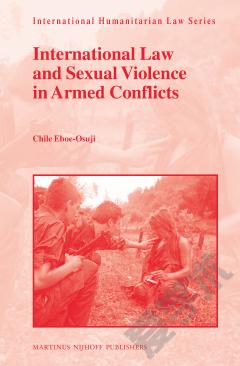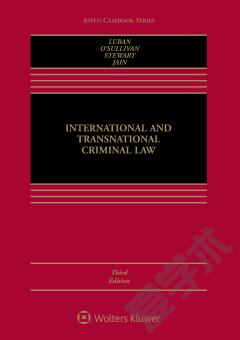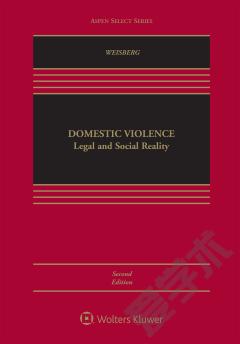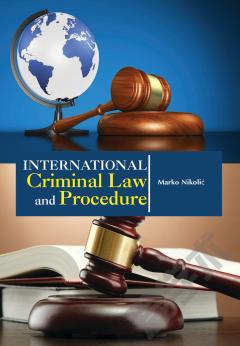Domestic Violence and International Law
1 Domestic Violence as a Violation of International Human Rights Law Introduction Sources of International Law Complexities of Customary International Law The Elements of Customary International Law Traditional Theories of Customary International Law Contemporary Theories of Customary International Law Applying Customary International Law to Domestic Violence Traditional Theories of Customary International Law Contemporary Theories of Customary International Law Is there an Emerging Norm Prohibiting Domestic Violence? Women's Rights in International Law-Historical Overview Violence against Women in International Law-Historical Overview Domestic Violence in International Law-Historical Overview and Status Quo: 1946-2000 1946: Commission on the Status of Women 1979: CEDAW 1979: CEDAW Committee 1985: UN Resolution 1990: UN Resolution 1992: CEDAW Committee General Recommendation 19 1994: DEVAW 1995: Beijing Platform for Action Domestic Violence in International Law-Historical Overview and Status Quo: 2000-09 2000: The CEDAW Optional Protocol 2000: UN General Comment No 28 2004: General Assembly Resolution on the Elimination of Domestic Violence against Women 1994-2009: Reports of the Special Rapporteur on violence against women, its causes and consequences 2005-06: Resolutions and Action by the Office of the High Commissioner for Human Rights 2001-08: Resolutions of the Commission on Human Rights and the Human Rights Council 2004-09: Further General Assembly Resolutions 2006-08: Work of the Secretary-General 2000-09: Work of the Treaty Monitoring Bodies The Approach of Regional Human Rights Law and Bodies to Domestic Violence Inter-American System European System African System Specification of Certain Forms of Violence against Women in International Law Mass Rape Female Genital Cutting Trafficking The Writings of Respected Authors and Scholars The Distinction between Public and Private The State's Role Cultural Relativism Discrimination and Violence Conclusion 2 Freedom from Systemic Intimate Violence: The Human Right and Corresponding State Obligation The Substance of the Right Exploring the Internationalising Elements of Domestic Violence The Elements of Systemic Intimate Violence Severe Acts of Emotional or Physical Harm Continuum of Harm Between Intimates Group Vulnerability of Women The Failure of the State to Help Moving from an Emerging Norm to a Right in International Law Steps Needed in International Law The First Step: The Enunciation of a Specific Legal Right The Second Step: Political Consequences of Domestic Violence The Third Step: Bringing Domestic Violence into the Remit of Non-Gender-Specific Human Rights Bodies Good Governance Practices: What States Should Do to Protect Against Systemic Intimate Violence Legislative Steps Anti-discrimination Provisions Acts of Violence Continuum of Harm Relationship Criminal v Civil Sanctions Balancing Civil and Criminal Sanctions: The Protection Order Compensation and Damages Evidence and Burden of Proof Labour Laws Murder by Victims Fair Procedure and Rules of Justice Remedies and the Provision of Services Police Protection and Implementation of the Law Statutory Obligation to Protect Training Specialised Units Female Officers Data and Inter-departmental Communication Police Powers Judiciary and Judicial Agents Knowledge of Rights Shelters Emergency and Long-term Health and Economic Well-being Statistics, Indicators and Budget National Action Plans Conclusion 3 State Responsibility in Relation to Systemic Intimate Violence Principles of State Responsibility Background Who are the Subjects of International Law? Doctrine of Denial of Justice Is a State Responsible for the Actions of Non-State Actors? Elements of State Responsibility and their Application to Systemic Intimate Violence Conduct Element Wrongfulness Element Circumstances Precluding Wrongfulness Application of the Justification Principles to Systemic Intimate Violence Competing Values: Privacy Fault and Knowledge Role of the Judiciary Consequences of an Internationally Wrongful Act Conclusion 4 The Benefits of International Law for Victims of Systemic Intimate Violence Non-coercive Compliance Theory The Great Debate: Is International Law Effective? Suspicion of International Law in Brief Support of International Law in Brief The Multi-Faceted Process of International Law Norm Infiltration Symbiotic Relationship between National and International Law Deficiency Not Nugatory Proliferation of Actors Facilitating Compliance with International Law Functions of International Human Rights Law in respect of Violence against Women International Law Leading to Change: The Expressive and Implementing Functions How International Law Changed the Legal Response to Mass Rape How International Law Changed the Legal Response to Enforced Disappearances How International Law Changed the Legal Response to FGC How International Law has Already Changed the Legal Response to Asylum and Domestic Violence Non-coercive Compliance Theory in respect of Systemic Intimate Violence Before DEVAW After DEVAW Domestic Violence in Mexico Before and After DEVAW Domestic Violence in Nicaragua Before and After DEVAW Domestic Violence in Sweden Before and After DEVAW General Examples of Improvements in Domestic Violence Laws and Policies Conclusion
{{comment.content}}








 京公网安备 11010802027623号
京公网安备 11010802027623号